Table of Contents
These days, it’s hard to avoid becoming overwhelmed at the meat counter, especially when trying to determine whether the cut of steak is right or wrong. It’s simple to just pick the steak that costs the least or that has the same name as the last steakhouse commercial you saw on TV. Even though it’s not difficult to make any cut of steak appetizing, there are several cuts that you should really avoid eating unless there are no other options.
The official USDA beef grade should always be the first thing you look for when selecting a steak cut. Steak cuts labeled “Prime” or “Choice” will almost always turn out to be tastier than lower-graded beef steaks. As much thought as possible has been given to the typical cost, flavor, and cooking skill required when determining which cuts of steak can safely be ignored while preparing for your next cookout or family dinner, even though your own location may influence the availability (and therefore the prices) of the cuts below.
The 14 Steak Cuts You Should Never Purchase
Eye Of Round Steak
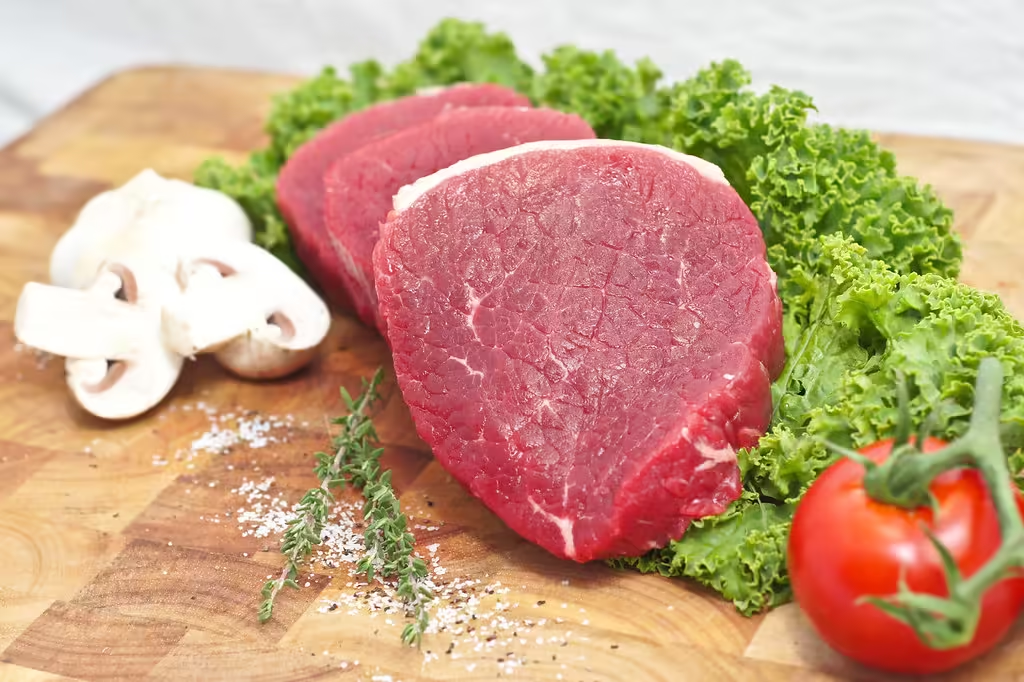
You can safely ignore any piece of meat branded “round steak” (or “eye of round,” as it is frequently called) if you happen to stumble across one. Even though it’s frequently less expensive than other beef cuts, round steaks are among the least popular because they’re extremely tough, lean, and flavorless. If someone isn’t careful or is in a hurry, they might mistake them for top round, which would make for a disappointing dinnertime discovery.
There aren’t many good things about bottom-round steak cuts, in contrast to the more tender top-round cut. Without a doubt, round steak is the least tasty of all of them, whether it is made from the bottom round or the eye of the round. Its sole real benefit is that, although it’s not always the case, it’s usually less expensive than most other steak cuts.
Skirt Steak
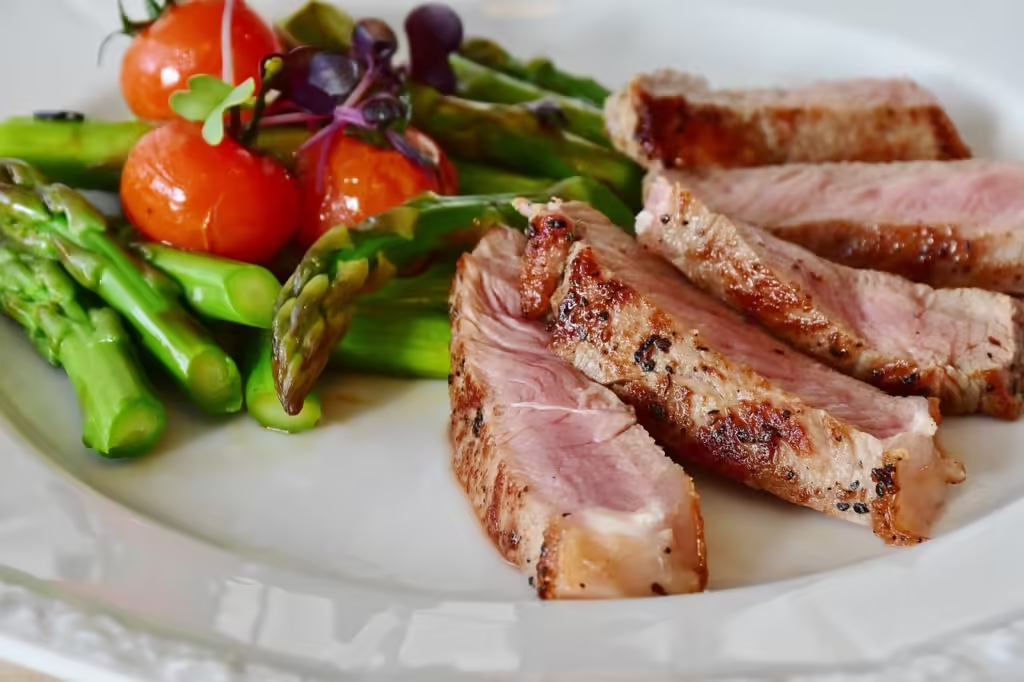
Skirt steak is really only something to consider when deciding what cut of steak to buy if you have a huge gathering of individuals who don’t have the most critical palates or if you have a large cooking surface and excellent time management abilities. The majority of the muscle in skirt steak, which is a very thin cut of steak, comes from the beef’s plate, or the area within the chest beneath the ribs. Its strong grain must be carefully sliced against in order to prevent the flesh from becoming tough.
An undercooked skirt steak is probably the reason if you’ve ever attended a friend’s fajita Friday party and wondered why the beef strips were as rubbery as dog toys. Since skirt steak is sold in relatively large cuts while being extremely thin, most people tend to overcook it by carelessly slicing it into strips before cooking. This is not how it should be done; To preserve the meat’s fluids, the entire steak should be grilled over high heat on a grill or skillet.
Tri-Tip Steak
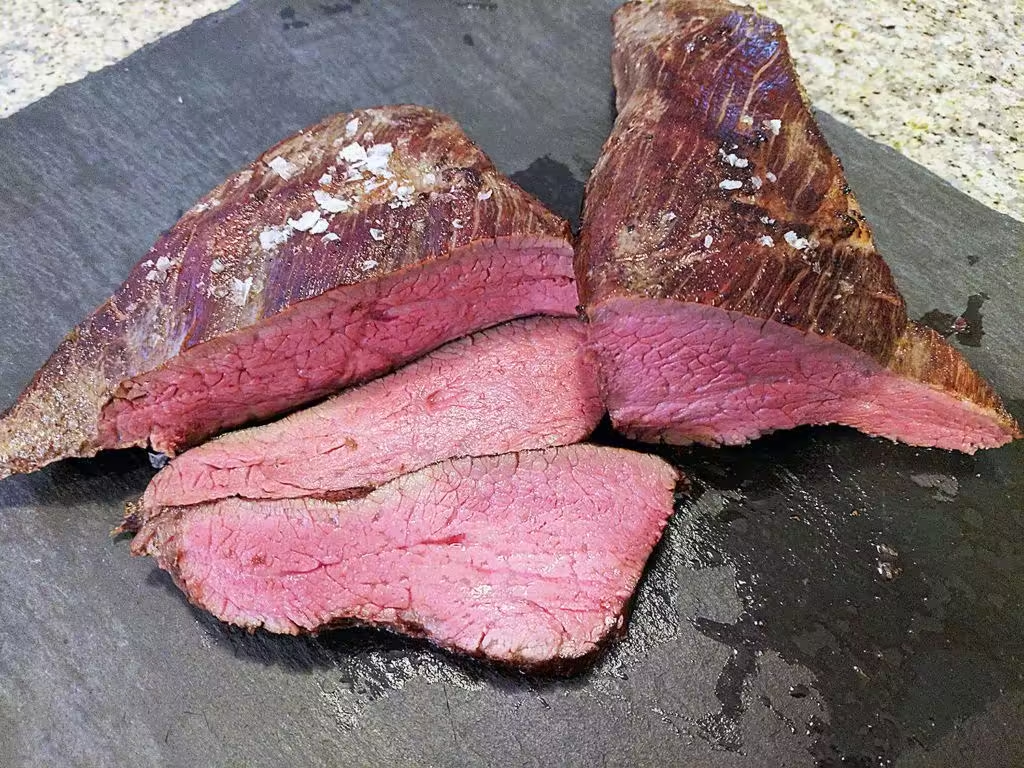
Another steak cut that people who don’t want to micromanage their food prep should stay away from is the tri-tip. The tri-tip, sometimes referred to as a California cut, Santa Maria steak, or “poor man’s brisket” by some, is a bottom sirloin cut with somewhat more marbling than either the skirt steak or the round steak cuts. However, because of its unusual triangular shape, it can be challenging to cook properly. This is why flipping the meat frequently while it is on the grill is a must in all the best recipes for grilled tri-top steaks. Unfortunately, even though the center of the tri-tip is relatively uncommon, it is still easy to overcook the edges.
Tri-tip steak cuts have the same drawbacks as skirt steak cuts: a grain that must be correctly cut through to preserve the meat’s flavor and an inclination to overcook and become tougher and chewier than usual. It could also be more difficult to find tri-tip, depending on where you live. The birthplace of the tri-tip steak cut is in California, therefore people who live nearby will probably have an easier time finding it than people who live on the US East Coast or elsewhere.
Flank Steak
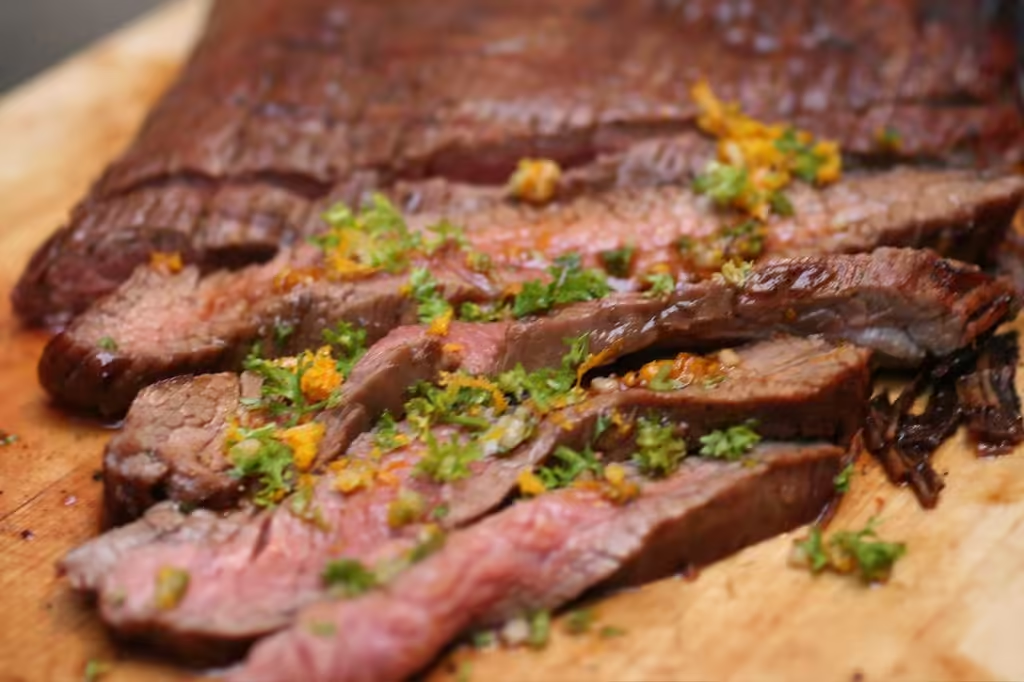
There might not seem to be much of a difference between skirt steak and flank steak at first. Although flank steak and skirt steak slices have many of the same drawbacks, if one must choose between the two in the grocery store, flank steak is almost always a superior option. As long as all sides are braised correctly, it is generally easier to cook a flank steak to the right temperature without the flesh becoming too tough to swallow, even if these cuts are still very lean.
Similar to skirt steak, to guarantee that the flank steak turns out juicy and tender, it is always better to cook the meat whole and just slice it against the grain into strips when the meal is ready to be served. Inadequately cooked or sliced flank steak can make your visitors’ jaws hurt due to the lack of marbling in the meat. Fortunately, flank steak has a somewhat superior flavor profile than its thinner cousin because it comes from the portion of the meat below the loin and sirloin.
Cube Steak
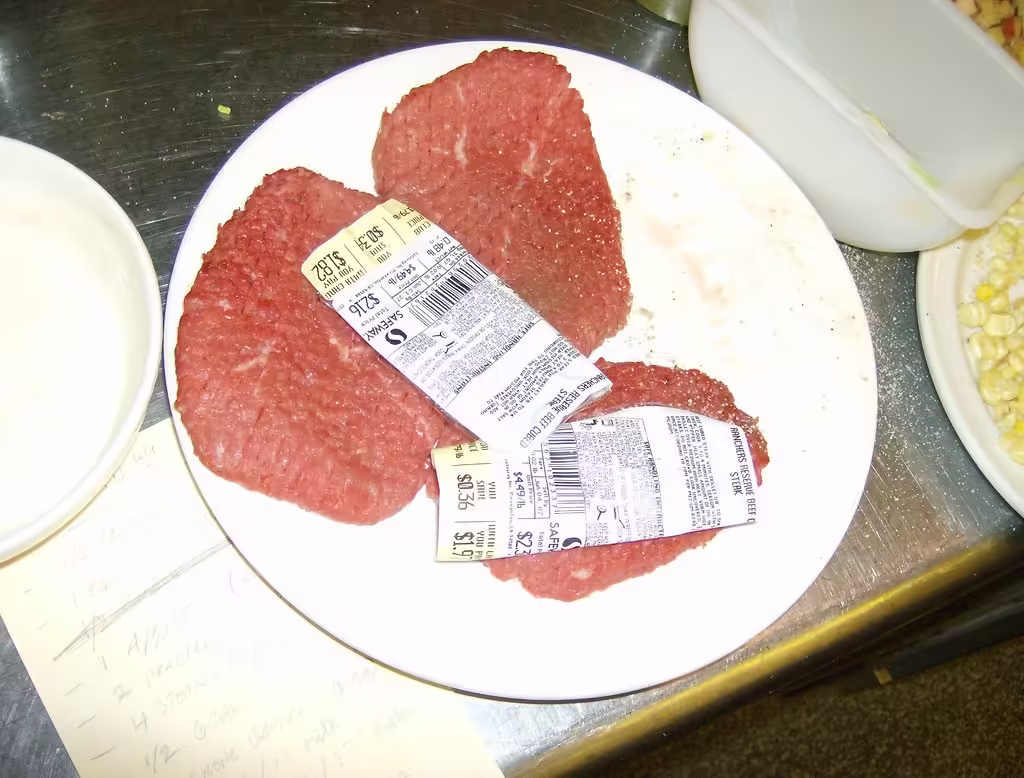
Not surprisingly, at the time of writing, “How do you cook cube steak so it’s not so tough?” ranks as the top “People Also Ask” Google search result for this particular steak cut. Cube steaks can be a challenging cut of beef to prepare properly, even if the majority of them that you purchase in stores have already gone through a mechanical tenderizer. This is so because cube steak is made from the top round, a leaner cut of beef that has more muscle and less fat.
Outside of the US, cube steak is sometimes referred to as “Switzerland steak” or “minute steak.” It may be easily identified by the holes created during the tenderization process. Sadly, the meat doesn’t cook with as much juice retention as it should because of these similar holes. If you don’t have any other steak slices on hand, your best bet would be to locate a decent chicken-fried steak recipe and try to cover up the meat as much as you can. Most cube steak recipes would call for extra liquid or substantial amounts of gravy.
Chuck Steak
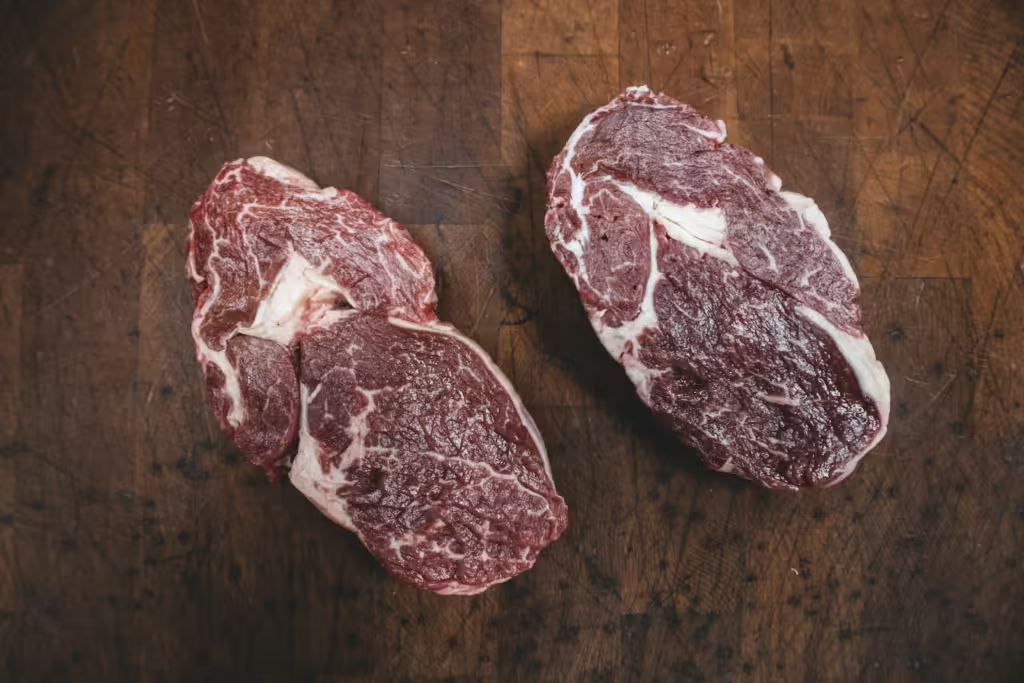
One of the roughest steak cuts available is chuck steak, which is derived from the same portion of the cow that is mashed up to form hamburger meat. These cuts originate from the beef’s forequarters, which are located close to the neck and shoulder region. Because of the amount of exercise the meat receives, it is frequently rather lean. Although this part of the animal yields a variety of steak cuts, chuck steak might be the one you should steer clear of most.
Chuck steak works well in a stew, but it can also be grilled and served like sirloin if the meat has been marinated for some time. Because of the toughness of the meat and the presence of sinew and collagen, which will break down and combine with the liquid to form a thick, stew-like consistency, chuck steak cuts are excellent for slow cooking. It is advised to season and pan-sear the meat before slow-cooking it in a Dutch oven when using chuck steak for a beef stew.
T-Bone Steak
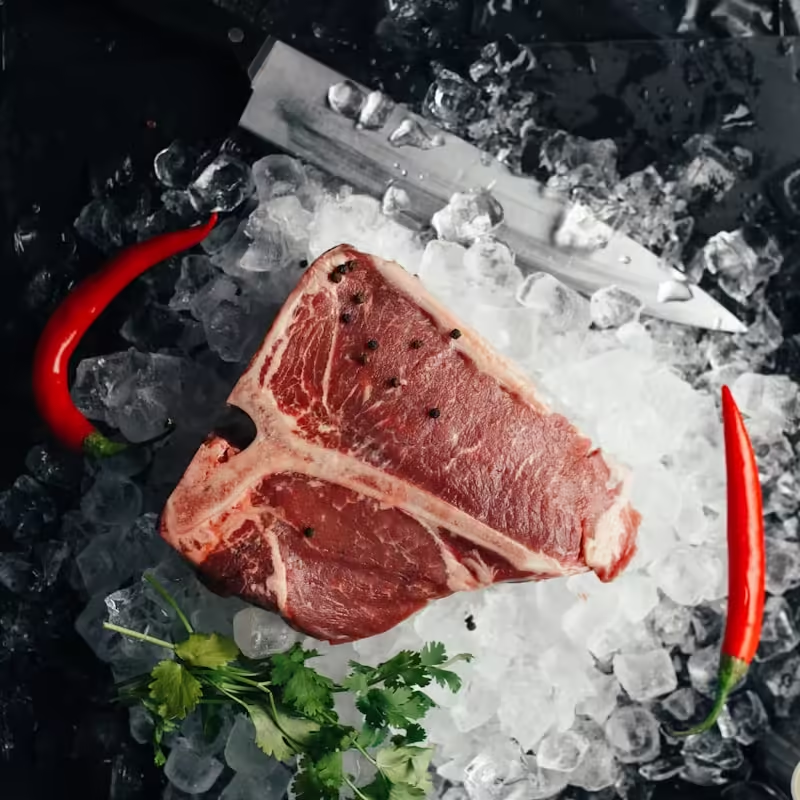
The T-bone steak cut may seem strange to include here at first because it is the smaller, lower-quality counterpart of a porterhouse steak. However, because they are hard to cook consistently and have a poor value for the amount of meat, T-bone steaks are a bit of an overrated beef cut.
The T-shaped bone that separates the tenderloin and New York strip cuts from one another is known as the T-bone, and some home cooks find this unusual shape to be annoying.
It’s critical to monitor the amount of heat reaching both corners of the T-bone, as the side containing the tenderloin has less fat and will cook more slowly than the strip side. Because of this, the T-bone is one of the steak cuts that you should avoid purchasing unless you have a grill at home. You can still correctly cook a T-bone on the stove if you have an oven and a decent cast iron skillet, but the meat tightens up when you cook it this way. It draws itself inward while the bone remains rigid while cooking, making it challenging to brown the entire steak evenly.
Bavette Steak
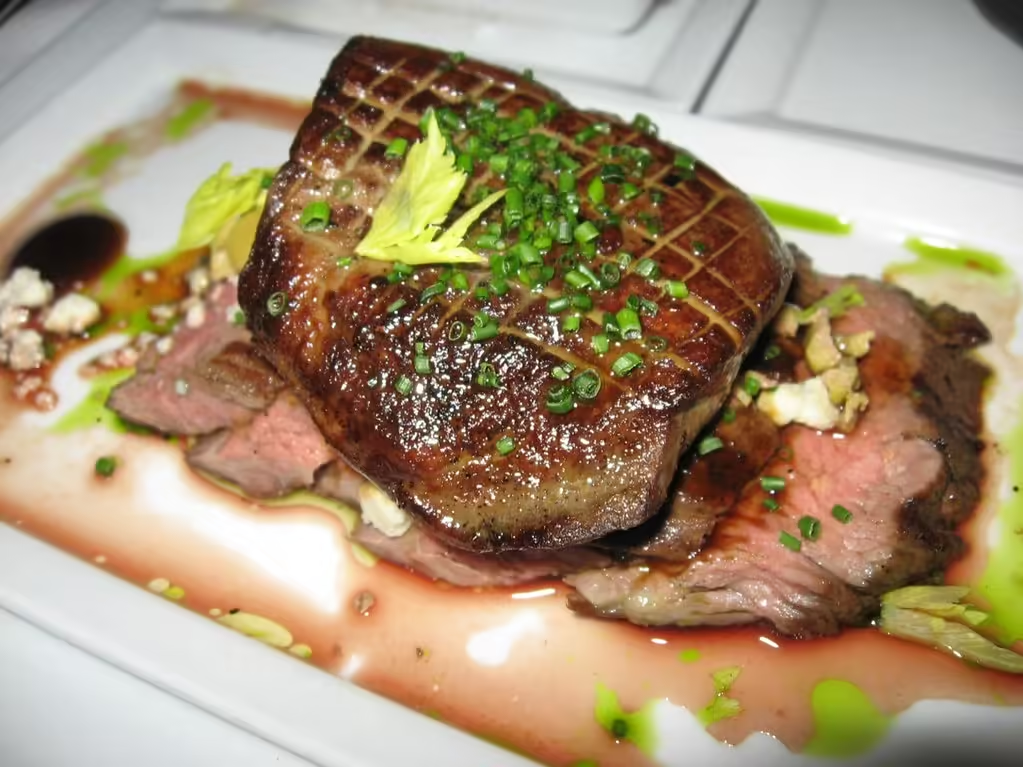
Because of their peculiar shape, bavette steak cuts—also referred to as flap meat or flap steak—can occasionally be confused for flank or skirt, but they taste better. It is far more tender than flank and skirt cuts because it originates from a deeper, less-worked portion of the cattle. However, complete bavette steak can be hard to come by, and due to its distinct texture, you’ll generally want to stay away from purchasing strips of flap steak.
For those of you who enjoy red meat, the most important thing while cooking a bavette steak is to make sure it’s not overdone. Because of the wide grain, high fat content, and location of the cut, flap flesh is extremely mushy when cooked to a rare temperature. For optimal texture and mouthfeel, prepare your bavette steak to at least medium-rare. While you’ll probably be cooking it longer than normal, it’s still crucial to use a high heat to achieve a good sear. Additionally, marinating the bavette steak in advance will enhance its flavor.
Flat Iron Steak
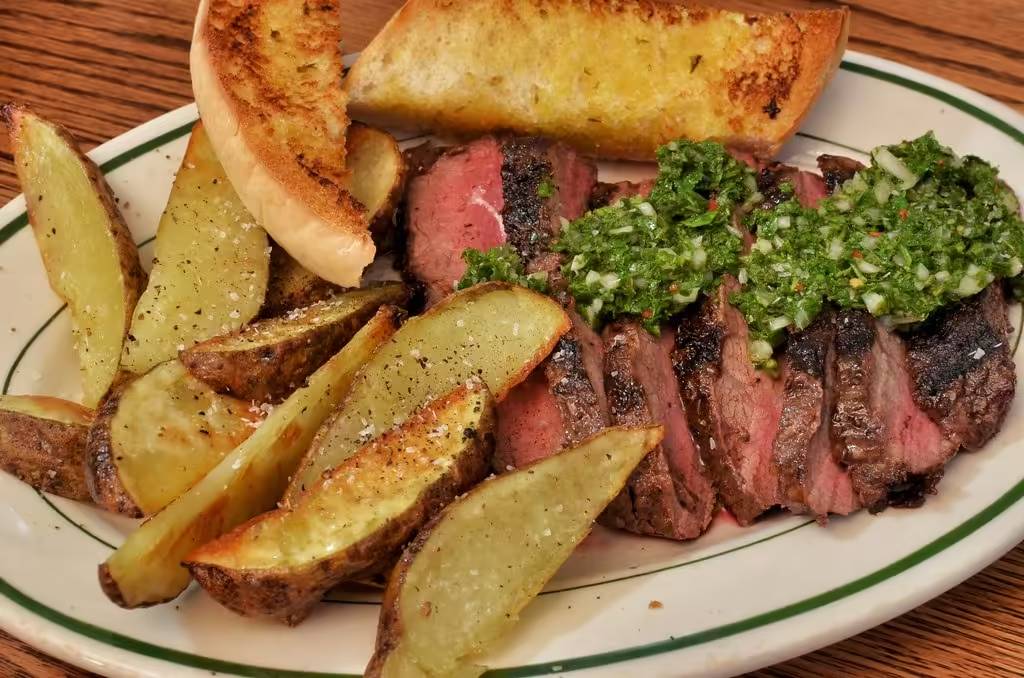
One of the more modern steak cuts available is the flat iron steak, which has a fascinating history. Although the flat iron steak cut originates from the same part of the beef as the chuck steak, butchers for many years thought that particular portion of the meat was useless. The University of Nebraska and the University of Florida conducted research on “cutting beef in a way to create single-muscle cuts or cuts that are consistent,” which led to the discovery of the cut in 2002.
The flat iron steak is a very small cut of steak, even though it has a high fat content and is highly soft. Because of this, flat iron steaks are something you should avoid purchasing because the price frequently approaches the “too expensive for the amount of meat you get” range. If you do decide to indulge in this cut of steak, the best method to cook it is to grill it at a high temperature so that the flames will lick the burning fat and produce a nice, crispy skin.
New York Strip Steak
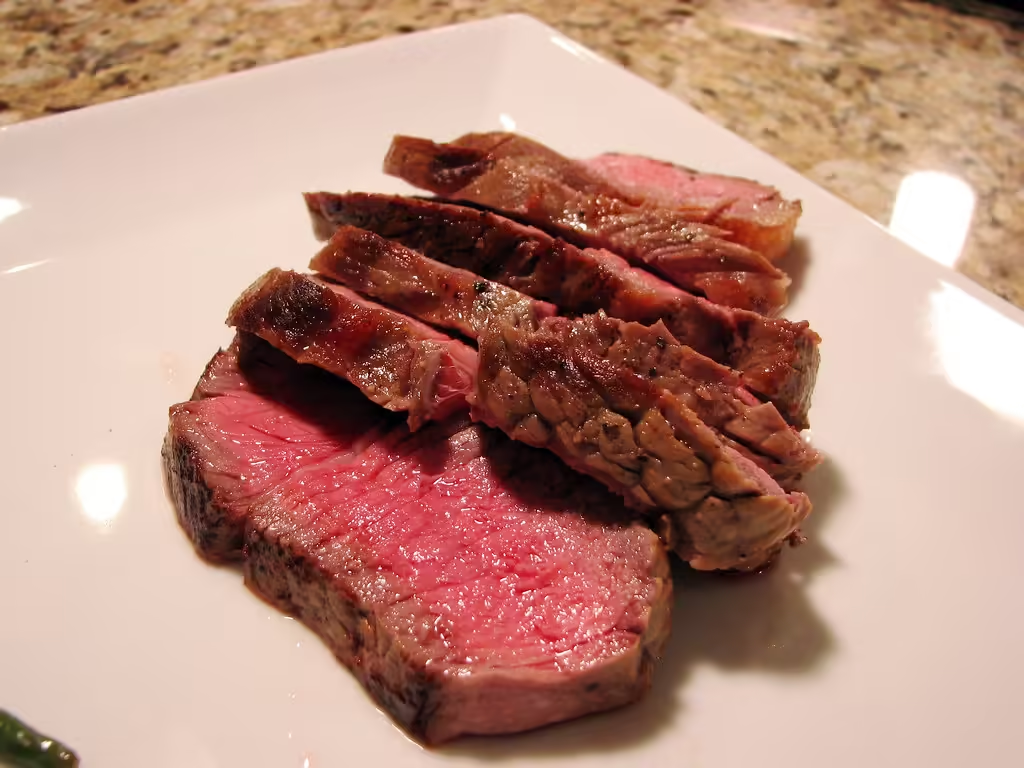
One of the most popular cuts of steak is the New York strip cut, which is a little overrated, much like the T-bone to which it is sometimes attached. Due to the irregularity in the marbling of the steak cut and the way strip steaks are sliced, Chef Laurent Tourondel previously told Tasting Table New York that strip steak was “hit-and-miss” and that he personally doesn’t buy it. It’s pleasant at times. Occasionally, it is chewy.
New York strip steaks aren’t particularly remarkable, and their tenderness is really limited to how they compare to the poorest items on this list. The cost of New York strip steaks has also increased recently, and around 50% of consumers have reduced their steak consumption entirely as a result of growing costs and this uneven quality. Just buy anything different instead of taking a chance on a New York strip steak.
Blade Steak

It’s crucial to consider the eating preferences of the entire family when choosing which steak cuts to avoid purchasing at the grocery store. Blade steak is one option that the younger members of the home might not find appetizing. Blade cuts, so named because of the large vein of gristle running through the middle of the meat, originate from the same muscle as flat iron steaks, but because of the gristle, they are less expensive. Blade steaks can be grilled with a little preparation, however they are usually smoked or braised.
Slicing the line of gristle inside the meat is the finest thing to do before grilling a blade steak. Not only does this make the meat look more appealing, but it also keeps the steak from getting too rough. Blade steak is one of the more tender steak cuts available when properly butchered and cooked to no more than medium rare. Your jaw muscles won’t like it, though, if you cook the blade steak over medium-rare without first removing the gristle.
Picanha Steak
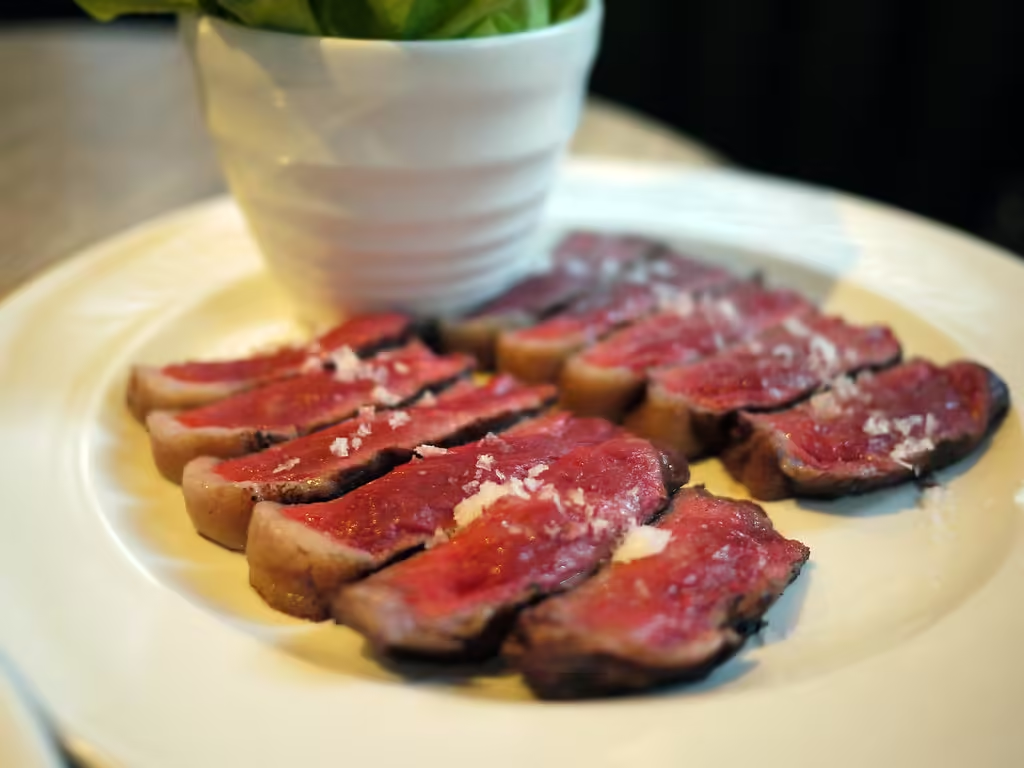
Picanha steak is another steak cut that needs to be properly prepared at home in order to be eaten. Picanha steak is made from the rump of the cow and is sometimes referred to as top sirloin or rump cover in the US. It can be purchased with or without the thick covering of fat that covers the steak still attached. Make sure to purchase a picanha steak with the fat cap still on if you can’t prevent it because it provides more flavor throughout the cooking process.
In the end, you’ll be receiving a sizable portion of picanha steak flesh and slicing each slice of steak yourself, so you have a few choices whether or not your meat has its fat cap. In Brazil, picanha steak slices gained a lot of popularity. Traditionally, they were grilled or pan-seared, but they can also be prepared on big skewers. It’s crucial to remember that the meat should be cut with the grain while preparing the individual steak slices and against the grain when serving your picanha, regardless of whether you are skewering it or cooking it over a barbecue.
Denver Steak
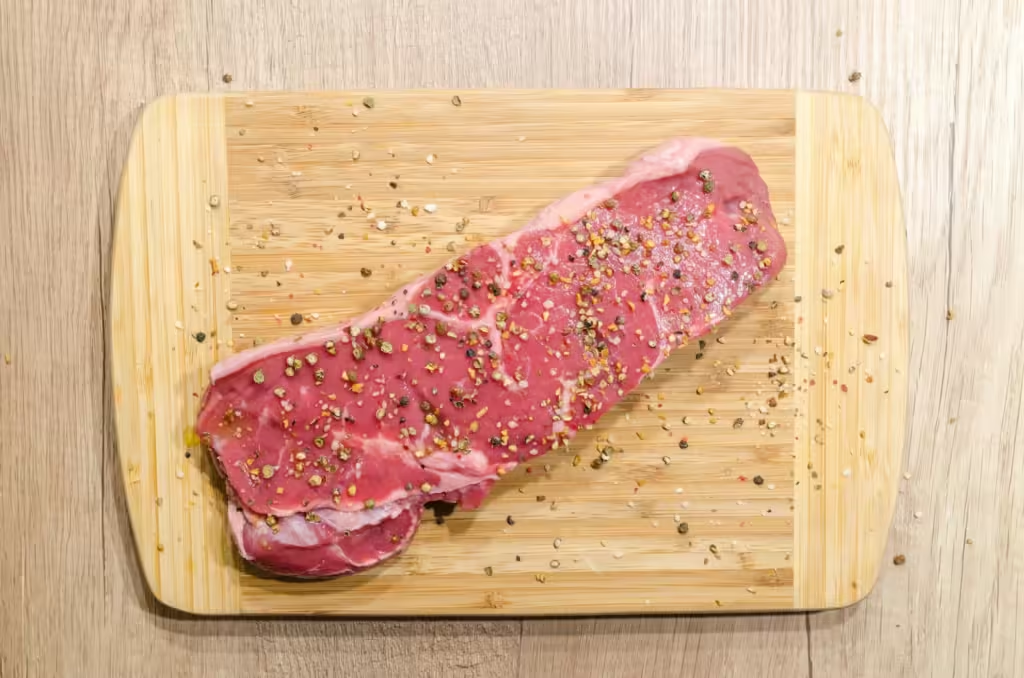
Denver steak is a difficult-to-find steak cut that is typically only offered online or in advance if you inform the butcher of your desire. Because it takes so long to extract, Denver steak, if you find it in a grocery store, is probably going to be expensive. Deep within the chuck, Denver steak pieces are removed from the cattle in one piece using a method that The Spruce Eats as “more like surgery than carpentry.”
If, after much work, you manage to produce a Denver steak, it must be cooked and sliced correctly to guarantee that it remains tender. Owing to the substantial quantity of marbling, sous vide or low heat followed by a reverse sear are the preferred methods for handling these steak cuts. Just keep in mind that, even when preparing a steak sous vide, it’s crucial to achieve a nice sear towards the finish. Additionally, to honor the butcher’s labor of love, always cut your steak against the grain when serving.
Tomahawk Steak
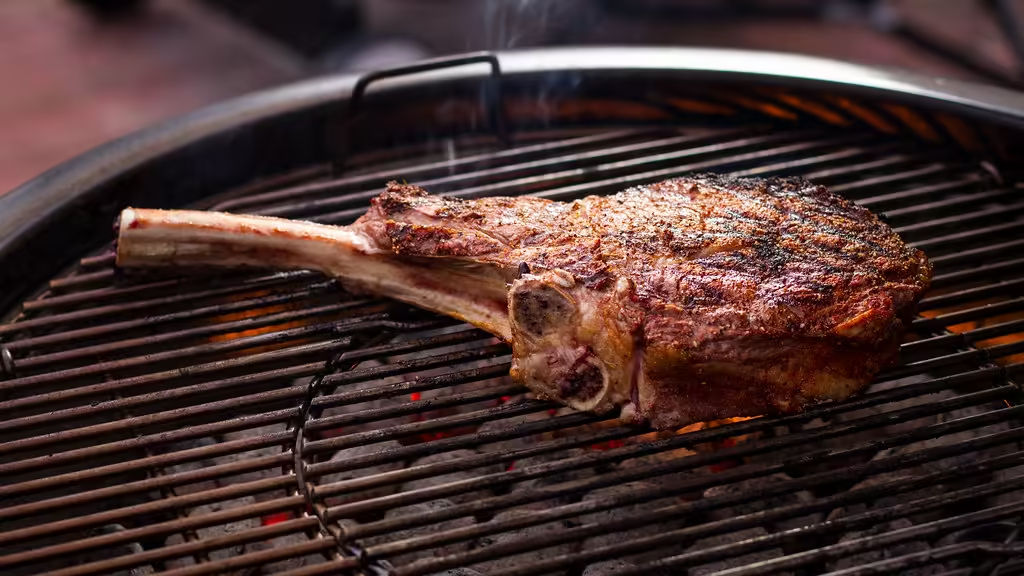
The tomahawk steak tastes great. This steak cut, which originates from the cow loin and is identifiable from a distance, is sometimes referred to as the bone-in ribeye. It even has an attractive appearance. It’s also awkward, particularly for home cooks without access to a grill, as grilling a tomahawk steak will yield the greatest results. Tomahawk steak cuts, with their huge bone, have many of the same drawbacks as T-bone and porterhouse steaks and should be treated with similar caution.
Although searing a tomahawk steak on a grill and then finishing it with a brief high-heat sear on a pan is perhaps one of the most delicious ways to consume steak, tomahawk steaks are by far the least nutritious steak cut available. For an occasional dinner party, it might be a decent option, but for a typical family supper, it’s best to stay away from purchasing steak cuts that have more than 100 grams of fat per serving.
Techniques
A lot of thought was given to the rising cost of meat prices in comparison to the amount and quality of meat that each cut finally produces when made into a steak at home when deciding which cuts of steak to avoid purchasing. In addition to determining value, we take into account the makeup of each cut, from average density to marbling. We made our selections based on consumer ratings, popular supermarkets, local and internet butchers, and my own experience as a nearly two-decade-long cook. With the correct methods and tools, everything can be turned tasty, but home cooks will always prefer certain steaks over others.
read also: Can Meat That Has Been Frozen for Two Years Be Eaten Safely?
The 14 Cuts Of Steak You Should Steer Clear Of Buying (msn.com)
14 Steak Cuts You Should Never Purchase 14 Steak Cuts You Should Never Purchase 14 Steak Cuts You Should Never Purchase 14 Steak Cuts You Should Never Purchase 14 Steak Cuts You Should Never Purchase 14 Steak Cuts You Should Never Purchase 14 Steak Cuts You Should Never Purchase 14 Steak Cuts You Should Never Purchase 14 Steak Cuts You Should Never Purchase 14 Steak Cuts You Should Never Purchase
14 Steak Cuts You Should Never Purchase 14 Steak Cuts You Should Never Purchase 14 Steak Cuts You Should Never Purchase 14 Steak Cuts You Should Never Purchase 14 Steak Cuts You Should Never Purchase 14 Steak Cuts You Should Never Purchase 14 Steak Cuts You Should Never Purchase 14 Steak Cuts You Should Never Purchase 14 Steak Cuts You Should Never Purchase 14 Steak Cuts You Should Never Purchase
14 Steak Cuts You Should Never Purchase 14 Steak Cuts You Should Never Purchase 14 Steak Cuts You Should Never Purchase 14 Steak Cuts You Should Never Purchase 14 Steak Cuts You Should Never Purchase 14 Steak Cuts You Should Never Purchase 14 Steak Cuts You Should Never Purchase 14 Steak Cuts You Should Never Purchase 14 Steak Cuts You Should Never Purchase 14 Steak Cuts You Should Never Purchase

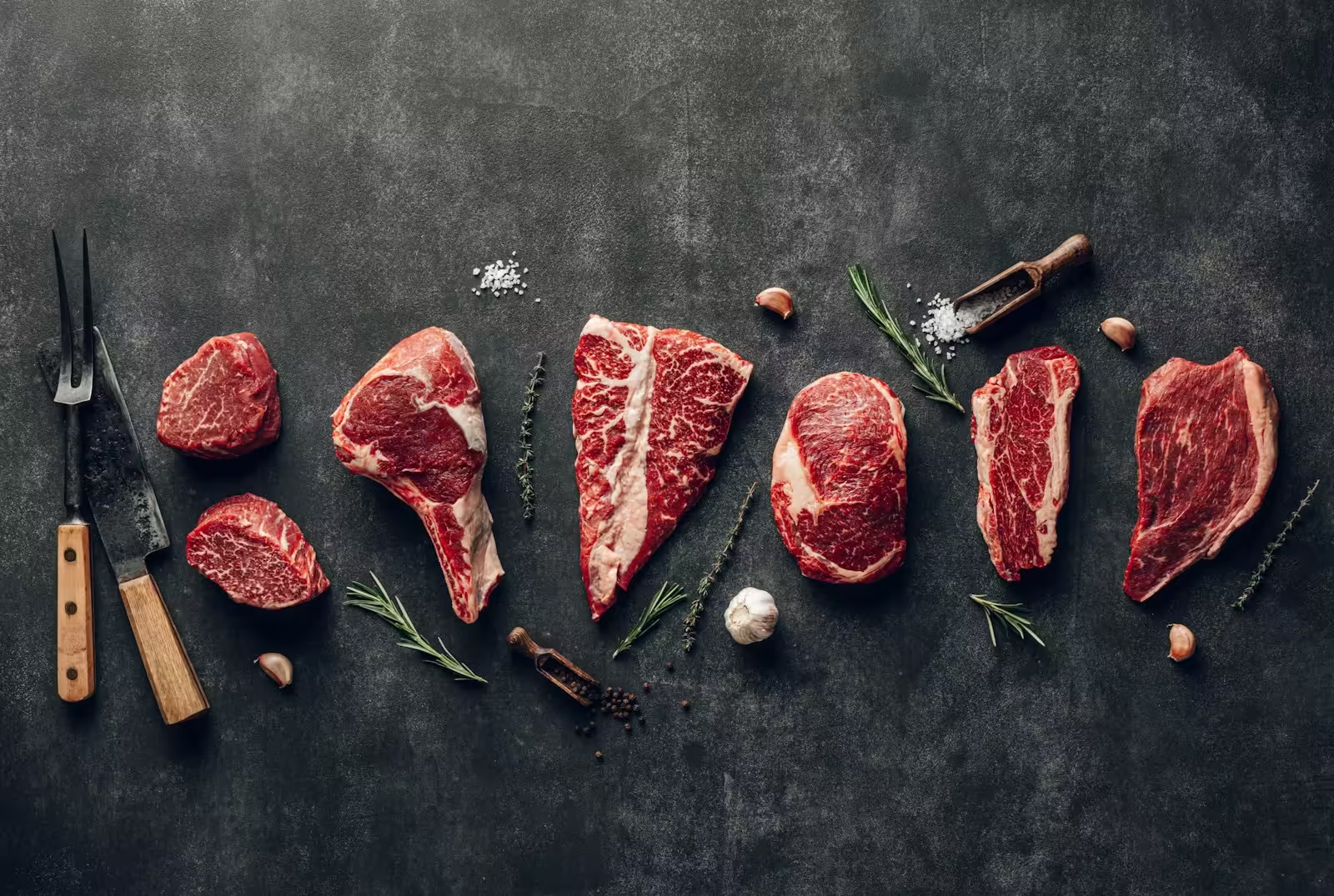
3 thoughts on “The 14 Steak Cuts You Should Never Purchase”